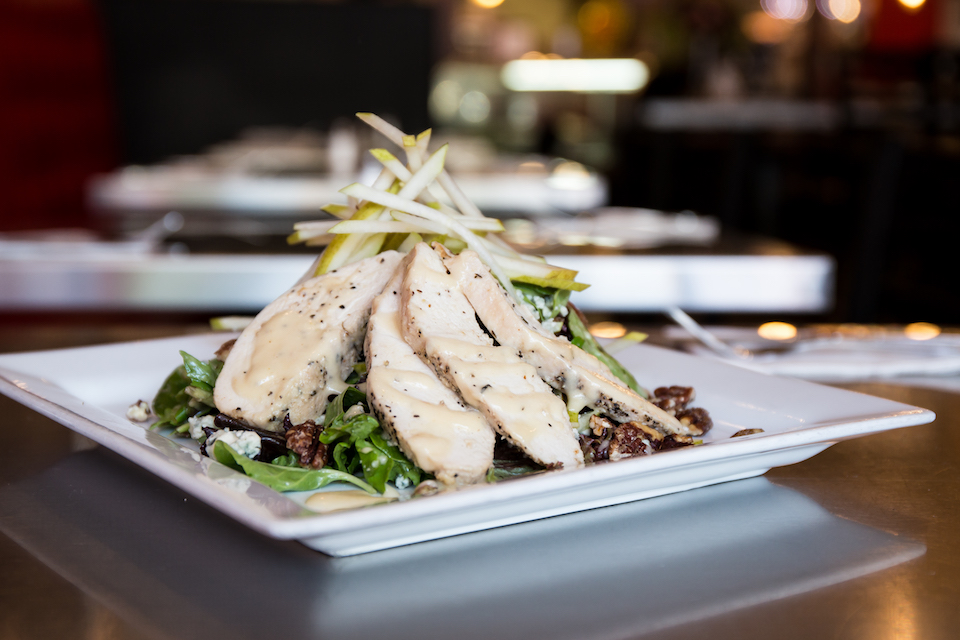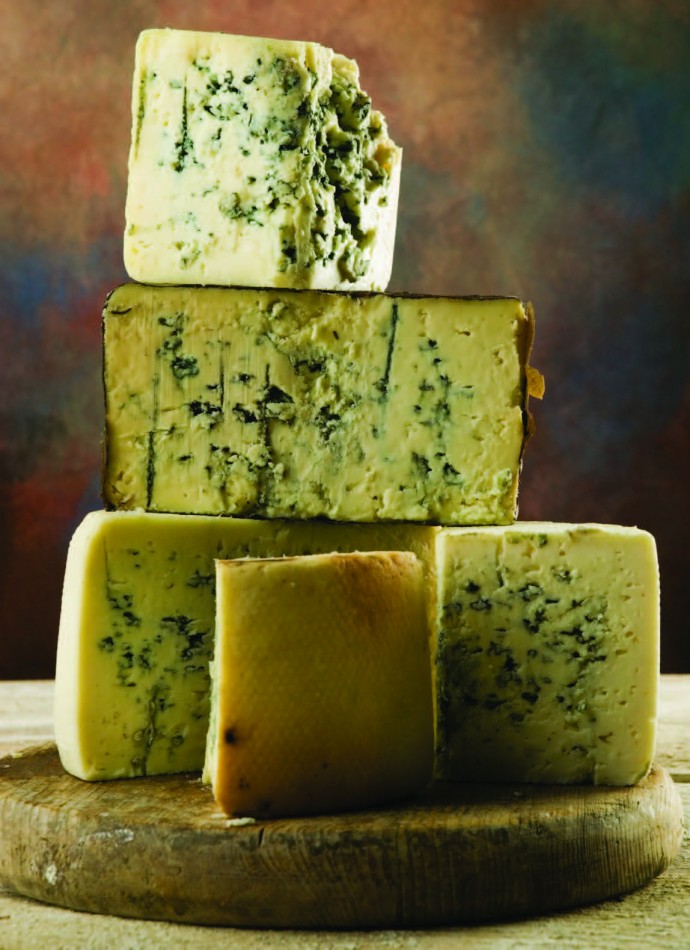Most mornings in June, starting at about 5:30, Chris Christensen is out in the strawberry fields of her 250-acre farm in Albany, picking the perfectly ripe fruit. “I’d rather sit and pick than do anything else” says Christensen, a third-generation strawberry grower. “There’s that quiet moment when the crew gets down to do it, and the birds are going, and you’re in your own thoughts. I’m giddy.”
As she deftly plucks the berries from the plants, she’ll pop a few into her mouth, savoring the natural sugar and juice that combines in an intense flavor found only in an Oregon strawberry.
From farm-stand shoppers to food scientists and high-profile chefs, people with discriminating taste buds agree that this state produces the most intensely sweet, red and juicy strawberries. Even the world’s strawberry cognoscenti, mostly food professionals, know this. Yet, the berries are still relatively obscure, in part because production remains relatively small. Oregon strawberry fields yield one percent of the nation’s strawberries.
Many of the berries in Oregon markets come from the nation’s top producer, California, where they grow eight months out of the year. Unlike Oregon strawberries, elsewhere strawberries are grown to be hard enough to travel long distances, according to the Oregon Strawberry Commission. It’s easy to recognize the difference. Oregon strawberries are red all of the way through, tender, aromatic, and filled with flavorful juice. Most consumers, however, think of strawberries as the type from beyond the state: crunchy, white at the core, and often not as sweet, nor as juicy and delicious.
“People like that big hard berry that bounces,” says Christensen’s husband, Mike, who is also the chairman of the state strawberry commission. “There are people out there who are willing to pay for a premium berry, but they don’t know it exists.”
Oregon’s climate in the Willamette Valley– with its rain, long, mild spring, early summer, cool nights and warm sunny days, is perfect for growing the sweetest strawberries. They ripen slowly on the vine, allowing the sugars to multiply before harvest.
“Strawberries grown up here are better – just like the Pinot noir is good here,” says Matt Unger, a third-generation strawberry farmer, with 60 acres in Cornelius. As a boy, he picked strawberries on the farm that his grandfather started more than one hundred years ago. “My hands would always get red from the strawberry stain, and the smell – that’s always good.” Today, his fields are two miles from the family farm, run by his brother, who no longer grows strawberries.
Unger says he still revels in the experience. “Strawberry season is crazy and kind of fun when you’re sending all the berries out to market, and people are happy to see them,” he says. “I usually eat them fresh, not sliced and with sugar on them, just off the bush or out of the flat.”
Though the Oregon strawberry has maintained its reputation, growing and harvesting has declined. Growers are expected to produce about 1,800 acres of strawberries this year, a drop of more than 40 percent from 3,130 acres harvested in 2003 and less than half the acres harvested ten years ago. Production value has dropped to $13.8 million in 2009 from $25.8 million in 1998, according to the Oregon Strawberry Commission.
Competition from California and Mexico is just one factor. Labor is also a challenge because strawberries are entirely hand picked. The Oregon strawberry industry has survived by selling berries for different applications: frozen berries or for jams, jellies, syrups, ice cream, yogurt, beverages and baked goods.
Some of the state’s major growers and processors believe the Oregon strawberry is a delicacy that needs only the right marketing to make it as internationally renowned as Oregon wine. Last year, the Oregon Strawberry Commission, with a limited budget, launched a campaign targeting national media and branding with the slogan, “Sweeter. Redder. Simply Better.”
Mike Christensen said the campaign is the best strategy for raising the fruit’s profile. “This could do for the Oregon strawberry what Oprah did for Portland-based Moonstruck chocolate,” he says. The commission is also trying to get consumers to start thinking of Oregon strawberries beyond June. When frozen, the berries retain their taste and texture better than others, Christensen says.
Oregon’s chefs know these rich rubies grow in their own backyards. Chef Leif Eric Benson, named the state’s “Chef of the Year” by the Oregon Department of Agriculture, is renown for using high quality fresh ingredients from the Pacific Northwest, and as a pioneer of the cuisine now known as, Northwest fresh.
“Oregon strawberries have a density of flavor versus the California strawberry, which is more watery and does not have the same type of profile,” says Benson, who is an ambassador for Oregon’s culinary agricultural products in official trade missions to Asia.
Benson was also the executive chef at Timberline Lodge for thirty-one years before retiring this past April. Last summer he launched “farmer’s market brunches” at the lodge to showcase Oregon’s sustainable farm-to-table cuisine. These events drew guests from around the country. One week, he included strawberry tastings, where he served the strawberries merely cut in half. “The others are white at the core and have green shoulders,” he says. “Then there’s the aroma that comes wafting up from Oregon strawberries, like perfume. You don’t even have to get close to them. The less you do to them, the better. They are just fabulous, like strawberry candy. But, if they are too ripe, you can purée them for a killer sauce.”
The sauce can be used for a glaze for chicken, salmon and pork. Benson simply purées the strawberries and for each cup, adds balsamic vinegar to taste (about one or two tablespoons of the preferred Acetaia San Giacomo). The tartness of the vinegar balances the sweetness of the strawberries. “It’s a really nice glaze for pork chops or tenderloin and for a summer barbecue—you can’t beat that,” he says.
He also adds strawberry purée to champagne for a mimosa, and to lemonade and tea. “It’s fabulous stuff because it adds a certain amount of depth of flavor,” says Benson.
At Castagna restaurant in southeast Portland, chef Matthew Lightner, named one of the country’s best new chefs in 2010 by Food & Wine magazine, and a semi-finalist for the James Beard Rising Star Chef award, says Oregon strawberries are special because of their short growing season, which gives them a rare and wonderful personality.
He uses them in sorbet and jam, and in the unripened form for an acidic touch to fish dishes. “Other than that, we try to let the strawberries shine on their own,” he says. “We love when farmers bring them in right off the farm, and they are still warm. We try to serve them immediately with cold cream. You can still taste the farm.”
While it dresses up nicely for some of the top restaurants in Oregon, the Oregon strawberry is not just haute cuisine. Burgerville, with thirty-nine restaurants throughout Oregon and Southwest Washington, uses Oregon strawberries in its strawberry milkshake, strawberry shortcake and strawberry lemonade.
The chain uses strawberries from Liepold Berry Farm in Boring, a fourth-generation farm started in 1948. In a time when many Oregon farms are decreasing the number of acres devoted to berries, Liepold has increased its strawberry acreage to keep up with Burgerville’s demand for about 60,000 pints of fresh berries every summer.
For great recipes from Chef Leif Eric Benson, click here and for a dessert recipe from Chef Carrie Minns click here.







